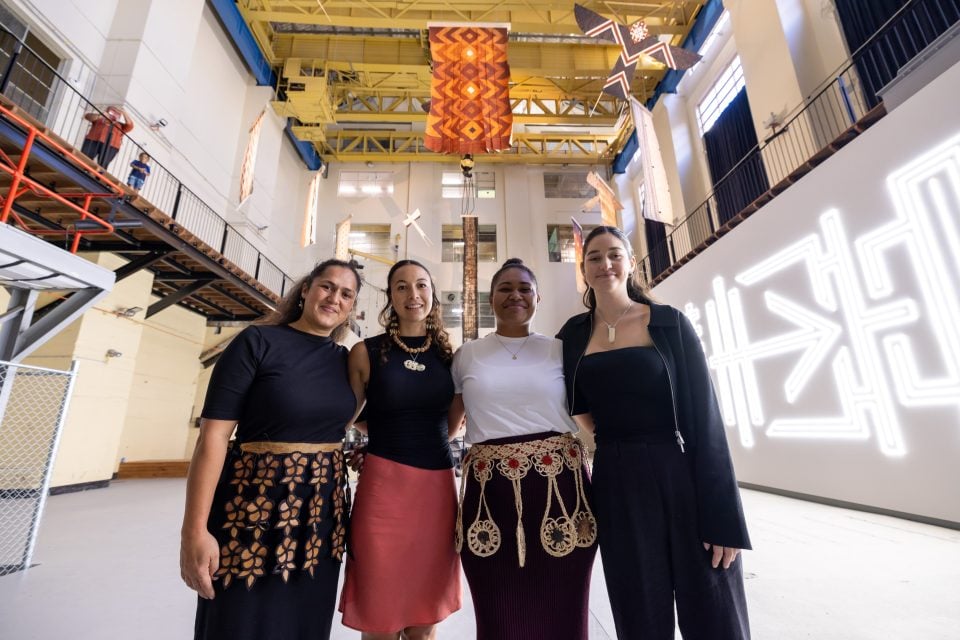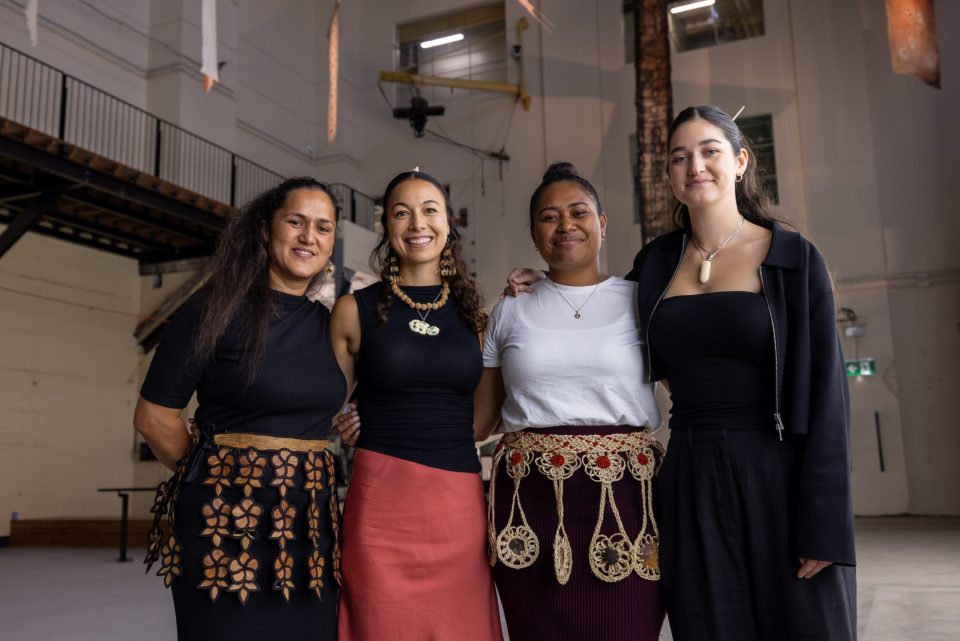Home Participants 24th Biennale of Sydney (2024) Nikau Hindin, Ebonie Fifita-Laufilitoga-Maka, Hina Puamohala Kneubuhl, Hinatea Colombani, Kesaia Biuvanua, Rongomai Grbic-Hoskins
Nikau Hindin, Ebonie Fifita-Laufilitoga-Maka, Hina Puamohala Kneubuhl, Hinatea Colombani, Kesaia Biuvanua, Rongomai Grbic-Hoskins
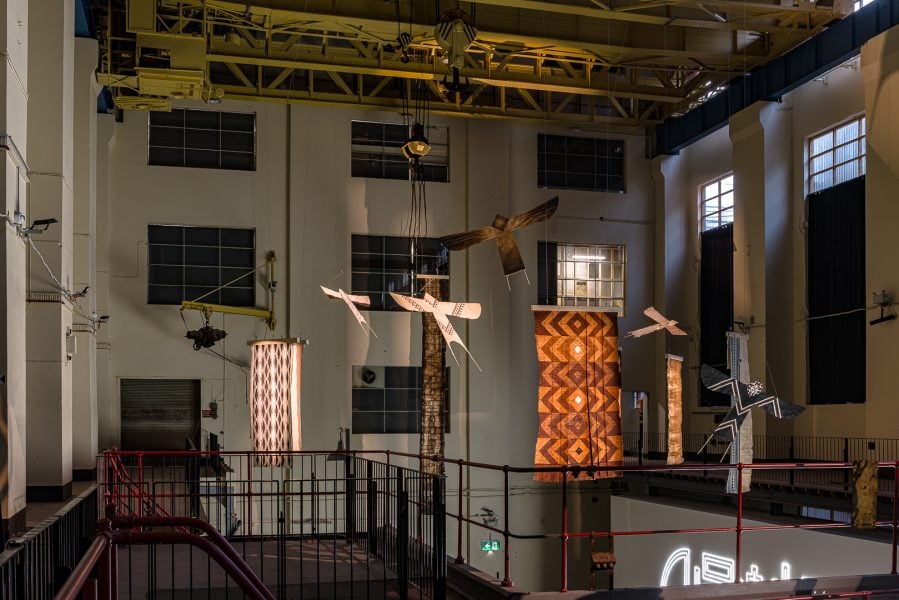
Nikau Hindin
Born:
1991, Te Rarawa/Ngāpuhi, Aotearoa New Zealand
Ebonie Fifita-Laufilitoga-Maka Fungamapitoa
Born:
1984, Tonga, Aotearoa New Zealand
Hina Puamohala Kneubuhl Kihalaupoe
Born:
1977, Maui, Hawai‘i
Hinatea Colombani
Born:
1985, Arioi, Tahiti
Kesaia Biuvanua
Born:
1993, Moce, Lau, Fiji
Rongomai Grbic-Hoskins
Born:
1996, Te Rarawa/Ngāpuhi, Aotearoa New Zealand

Nikau Hindin
Ebonie Fifita-Laufilitoga-Maka Fungamapitoa
Hina Puamohala Kneubuhl Kihalaupoe
Hinatea Colombani
Kesaia Biuvanua
Rongomai Grbic-Hoskins
White Bay Power Station
Aumoana, 2023–24
Aute, Hiapo, Kapa, Masi (bark cloth, broussonetia papyrifera), ‘umea, kōkōwai (earth pigments), nonu, gogo, tongo, gadoa, koka (natural plant dyes), smoked tō, smoked mānuka, smoked eucalyptus, smoked niumotu’u (coconut husk), muka cordage (Phormium tenax), Ash doweling (Fraxinus Oleaceae), toka’i manioke (tapioca starch)
Commissioned by the Biennale of Sydney and the Fondation Cartier pour l’art contemporain with generous support from Creative New Zealand
Courtesy the artists
Bound together by the tides of history, tradition and the sea itself, the Indigenous people of Tahiti, Hawai’i, Aotearoa, Tonga and Fiji have spent tens of thousands of years beneath the same stars.
Long before European colonisation, Māori ancestors, understood to be shared across Te Moana Nui a Kiwa (The Great Ocean of Kiwa), used knowledge of the constellations to spread over a third of the Earth’s surface. Known as celestial navigation, this wisdom was recorded in star maps throughout the islands. As well as surveying the ocean, these maps delineate time and seasons through tracking solar and lunar cycles.
Led by Māori bark-cloth maker Nikau Hindin, Aumoana is a collaboration between a generation of makers from Tahiti, Hawai’i, Aotearoa, Tonga and Fiji. Over 12 pieces, Aumoana uses the visual language of each culture to share symbols, stories and knowledge. Made of cloth hand-crafted from the bark of the paper-mulberry tree (ngatu in Tonga, kapa in Hawai’i, masi in Fiji, aute in Aotearoa and Tahiti), the work is a monumental effort in cultural revitalisation and an investigation into the material potential of the plant and the abundance of learning offered to each other from within diverse community relationships with the environment.
As Hina Kneubuhl describes each cloth is made with “the same love that births children…powers the tireless turning of careful hands toward the soil…toward the collecting of earth and plant pigments…cloth that envelops individuals and communities in ancestral wisdom and love, the cloth upon which the world turns”.
The Manu Aute (kite and bird) that hang between these cloths were traditionally used by the Māori people to divine the outcome of a battle, to communicate with distant kin, and to celebrate the dawn of a new year. In Aumoana they again call out to their people, memorialising what has been lost and honouring what endures.
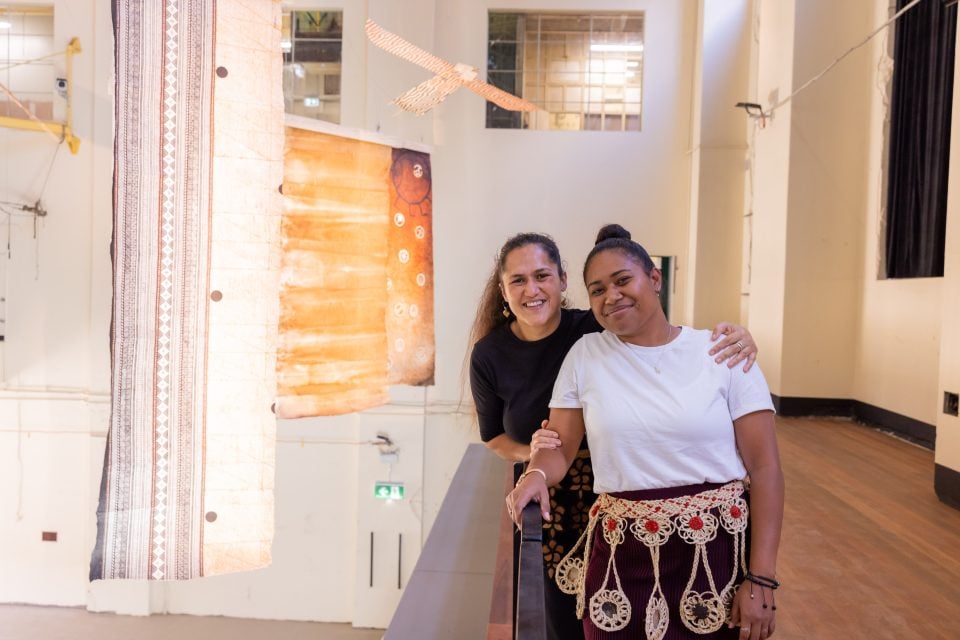
From left: Ebonie Fifita and Kesaia Biuvanua at White Bay Power Station for the 24th Biennale of Sydney (2024) Media Preview. Photograph: Dan Boud.
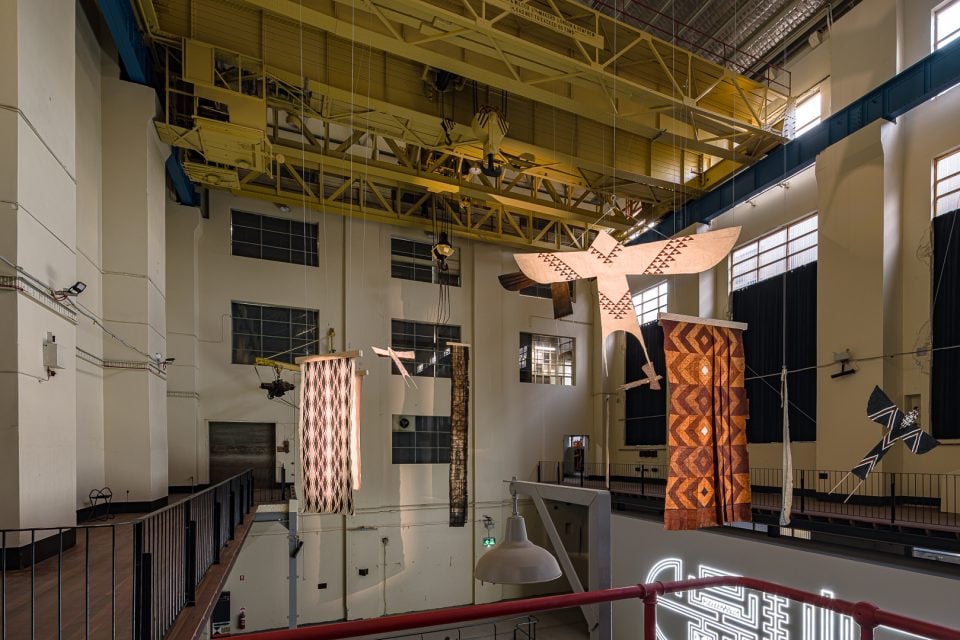
Nikau Hindin, Eboni Fifita-Laufilitoga-Maka Fungamapitoa, Hina Puamohala Kneubuhl Kihalaupoe, Hinatea Colombani, Kesaia Biuvanua, Rongomai Grbic-Hoskins, Aumoana, 2023-24 © Commissioned by the Biennale of Sydney and the Fondation Cartier our l’art contemporain with generous support from Creative New Zealand. Courtesy the artists © Nikau Hindin, Eboni Fifita-Laufilitoga-Maka Fungamapitoa, Hina Puamohala Kneubuhl Kihalaupoe, Hinatea Colombani, Kesaia Biuvanua, Rongomai Grbic-Hoskins. Installation view, 24th Biennale of Sydney, Ten Thousand Suns, 2024, White Bay Power Station. Photograph: Document Photography.
